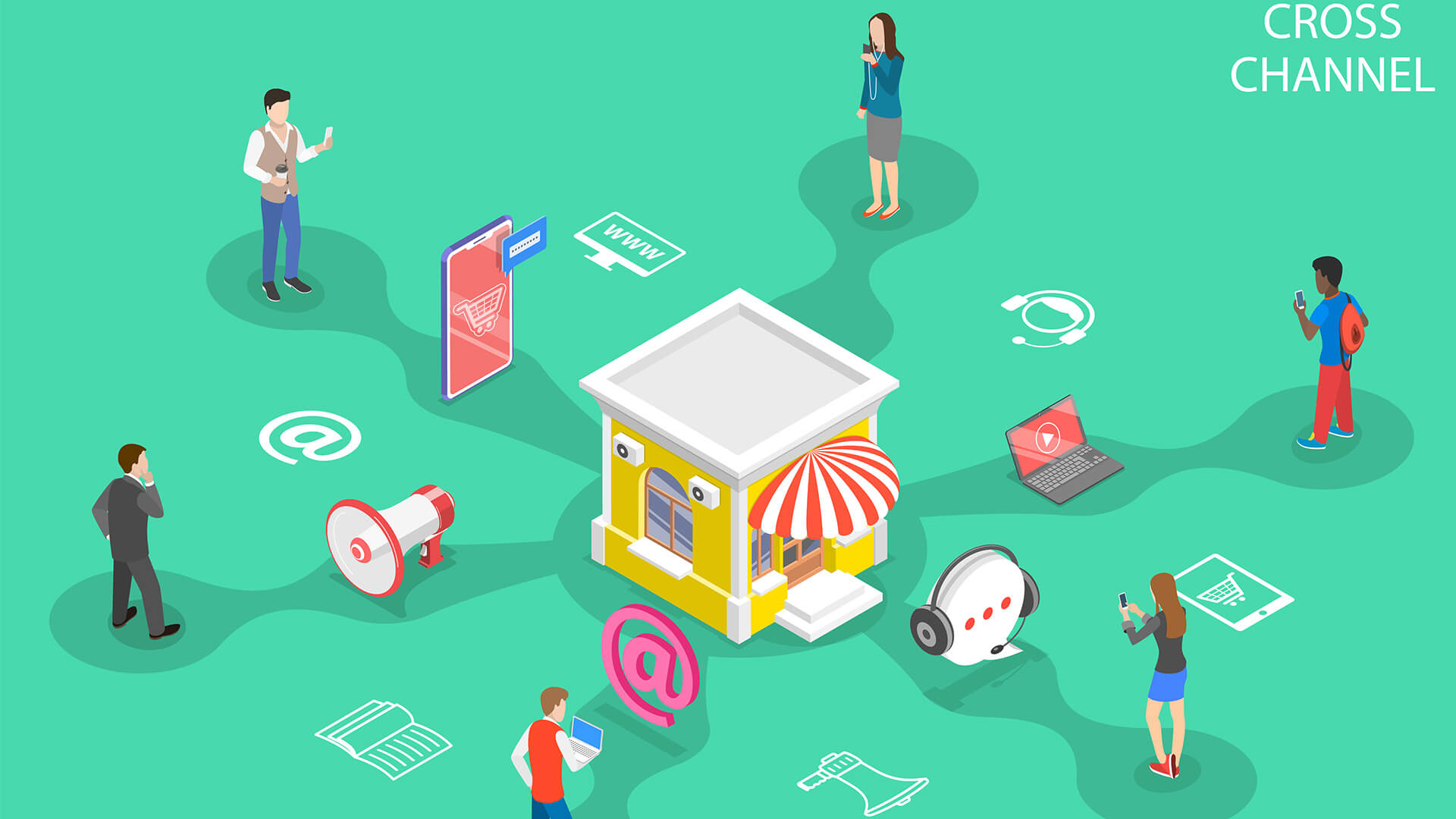By Patty Yan
Every business should work hard to build a strong customer service. Perhaps you’ve designed a stunning product and crafted a winning marketing strategy? Well, sadly this means very little if you neglect customer service. After all, without strong service, you can’t have happy customers. Without happy customers you will be unable to create a sustainable business.
But as time moves on and technology becomes more advanced, continuing to provide the best customer experience becomes harder. Support is no longer built entirely around the call center. Customers now expect seamless support across multiple devices and access points.
Whilst you might have customer service, is it omnichannel? Well, let’s find out!
What is Omnichannel Customer Service?
Today it’s not uncommon for a customer to use multiple devices when accessing support. For example, they may start by sending an email. This results in them being referred to a member of the support team for a phone call. When they contact a customer, should an agent: (A) Have a clear understanding of a customer’s problem, or (B) need the customer to explain their issue to them?
The answer, of course, is (A). If a customer is forced to repeat themselves, they will likely get frustrated. This, in turn, can damage their view of your brand; instead of quickly resolving their issue, you have wasted time.
If you provide an omnichannel service, you won’t encounter this problem. To be omnichannel your customer support must be seamless. If a customer’s journey begins at one contact point, i.e., a chat bot, and ends in another, i.e., over a video call, there should be a smooth transition between both points.
In other words, information about a customer’s query should be relayed across your organisation. This Omnichannel approach can improve your customer service and boost sales. Let’s explore some ways of building the best customer service that is truly omnichannel.
How is it Different from Multichannel Customer Support?
Providing multi-channel support is much easier than providing omnichannel customer service. Multichannel support involves offering support to customers from across all potential access points. Both omnichannel and multichannel support are important in today’s technological age. Let’s look at some examples of multichannel customer support:
- An online chat bot
- An FAQ or information hub
- Email Support
- SMS messaging
- Direct messaging on social media
- Online video calls
- Phone calls with agents
When providing an omnichannel experience, each of these points is connected, allowing a smooth flow of information.
Benefits of Using Omnichannel Support
You Can Provide First Contact Resolution
It should be every support teams’ goal to provide first contact resolution (FCR). To achieve FCR, your team should be able to resolve a customer’s query without them needing to call back. With an omnichannel service, your agents will have easy access to data. This means that they can understand a customer’s issue more quickly and identify a potential fix.
You Can Let Customers Know When an Agent Responds
People now want access to customer support as quickly as possible. This is probably why so many users are drawn to live chat support. In fact, 41% of all customers prefer to use real-time online chat. After all, there is no waiting in a queue, and often, much quicker access to an agent.
But there will be times when an agent isn’t available. During these times it’s important that you offer an experience that will not frustrate customers. Obviously, if they are forced to wait for an agent to join the chat, they won’t be leaving with a smile on their face. This is where omnichannel comes in.
With an omnichannel experience, instead of forcing a customer to wait, they can opt to receive a message when an agent is available. You can even provide a customer with multiple options for how they can be notified. They could opt for an email or an SMS message.
In this way, omnichannel can give your customer live chat a real boost.
You Can Provide Secure Experiences
Some companies deal with large amounts of sensitive information. That’s why in certain situations it’s important that you can verify that a person is who they say they are. Many businesses use instant chat services or email as a way of talking to customers. These tools provide an easy and accessible method of communicating with your business.
But these services can also be vulnerable. An account could be hacked, or another person could login to a user’s account. Similarly, email security can be breached. With omnichannel, you can provide a link to a more secure method of communication, such as by linking to your mobile app. This helps to minimise the risk of cybercrime and keep your customers safe.
You Gain Lots of Data
Data is increasingly a much sought-after commodity. With the right data, a business can create extremely targeted and effective marketing campaigns. But before you begin analysing data, you first need to collect it. The good news is that customer service is packed with data that is ripe for picking.
Because service is now focused on more than simple phone calls, businesses are provided with a wealth of data from different sources. This gives us useful insights into the behavior of our customers. What’s more, with omnichannel service, we can view data across a customer’s journey. You’ll need to tailor your data analysis to match your business, for example, you might have specific SaaS metrics requirements.
There is a wealth of analytics tools available that can improve a business’s data collection operations. With the right ecommerce analytics from data to decisions, you’ll have access to valuable information. Combine this with your omnichannel customer support and you can gain better customer insights than ever before.
Delivering An Omnichannel Experience
Whilst providing an omnichannel customer experience should be every business’ goal, delivering one is easier said than done. Here are some tips for approaching your omnichannel experience.
Start With the Basics
Before you can start to deliver an omnichannel experience, you first need to create multichannel support. This means more than just providing access to a phone line and email support. As shown above, multichannel support covers many areas. If you’re serious about providing the best support, you need to cover all bases.
This means that you need to be easily accessible to customers using multiple platforms. Are you providing multichannel support? If not, now is the time.
Create an Omnichannel Strategy
Once support is set up, you can begin creating an omnichannel strategy. To be omnichannel, customer experience needs to feel the same across different platforms. For example, the messaging found on your live chat page should be the same as on all other contact areas.
Remember the importance of brand identity. A customer should be able to identify your brand without seeing a logo. This means that you need to be consistent with the color scheme and font that you use across different platforms.
With a proper strategy in place, you can begin offering an effective omnichannel experience that boosts customer engagement.
Create Personalised Experiences
Customers want and expect personalisation. Recent studies have shown that as many as 80% of customers desire some form of personalised experience when interacting with a brand. In simple terms, if a business wants to succeed, it needs to create experiences tailored to individual customers.
The number one goal for your customer support should be to leave a customer feeling valued and to show that you understand their problems. By its very nature, your omnichannel customer service should be personalised.
Personalisation should carry across all your customer support. Your chatbots should refer to customers by their names. Data about a customer’s query should be smoothly transferred across different touchpoints.
With the right approach to personalisation, customers will reward you with increased loyalty and cash.
Deliver Quality User Experiences
To provide an omnichannel service, the user experience needs to be seamless. This means investing to ensure quality. For example, choosing an AI based chatbot will make sure customers receive answers quickly. Similarly, choosing the best phone system for small business helps to ensure crystal clear communications for callers.
Build An Omnichannel Organisation
There’s no doubt about the effectiveness of omnichannel customer service. If your goal is to keep customers happy and resolve their issues (and it should be), there is no better solution. Start looking at your business today, and how you can build an omnichannel approach to your service.
But it shouldn’t just stop there. To be truly transformational, Omnichannel customer service should be part of a wider push within your organisation. This push should put the customer at the center of all your operations. This means adopting an omnichannel approach towards how customers purchase products. Essentially, a customer should be able to start their buying journey on one device and finish it on another.
This should also inform your approach to marketing. Omnichannel marketing involves sending highly targeted adverts to customers across different platforms. Adverts should showcase products that customers are likely to enjoy.
By putting customers at the center of everything you do, you’ll increase your audience and improve your brand loyalty. Now’s the time to embrace omnichannel service and transform your organisation.








